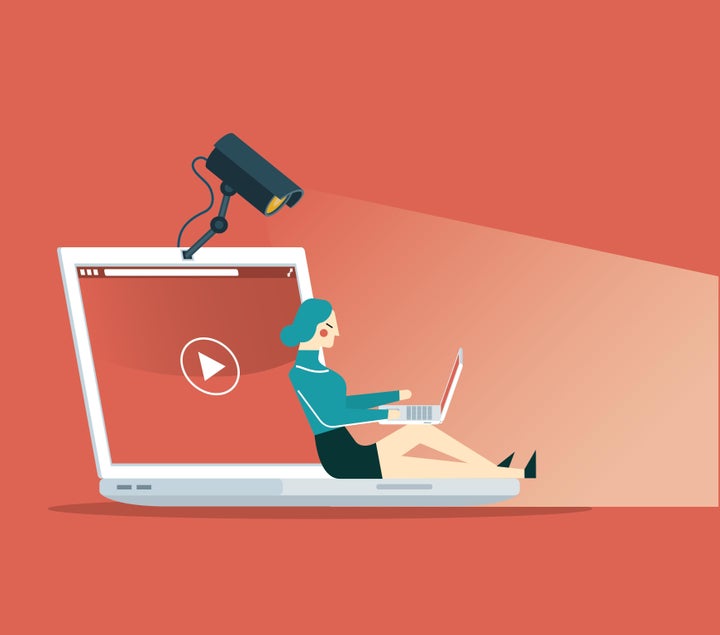
If you are paranoid about people seeing things they should not while you’re working, you may be wondering if you need a physical camera cover over your computer lens.
Several high-profile public figures have been known to use webcam covers, which are typically plastic sliders or a piece of tape that go over a lens. Former FBI Director James Comey told NPR he has done it. In a 2016 photo posted to his Facebook account, Meta CEO Mark Zuckerberg appeared to be using a sticker on his laptop camera. Should you do the same?
Here’s what experts think about how useful a webcam cover really is.
There aren’t many legitimate security reasons for needing a cover, but experts say it can’t hurt
If you worry about accidentally leaving your video camera on, a camera cover could ease your worries. Jonathan Young, associate vice president of Vantage Technology Consulting Group, uses webcam covers for this reason.
“Webcam blockers are useful primarily because people sometimes turn on or leave their cameras on unintentionally,” he said. “Or, people have multiple cameras –– laptop camera and standalone camera on an external monitor –– and the wrong default might pop up and transmit work information or an embarrassing or otherwise inappropriate view. I use camera covers on my devices for these reasons.”
Beyond saving yourself from potential embarrassment, there are good security reasons for doing so, too, said Michael Covington, a vice president of portfolio strategy at JAMF, an Apple device management platform.
“A physical webcam cover is the last failsafe layer that ensures the user remains in control of when they are seen on camera, especially when any of the following scenarios occur: The device’s camera could accidentally turn on due to a software bug; app developers can have malicious intent and build their apps to capture or steal data via the camera permission,” Covington said.
If the latter issue is what concerns you most – that hackers are looking into your home via your computer – then you may not need to worry that much, according to Nizel Adams, owner of Nizel Corp, an information technology consulting company in Chicago.
“I understand the paranoia. Nobody likes to feel vulnerable,” Adams said. “But if you’re taking preventative steps, the chances of somebody being hacked or somebody watching you on your web camera are slim to none.”
“If there’s a security breach, that breach doesn’t go away by you covering the webcam. That person is still going to be watching you on the other end,” he noted.
“In my 20-plus years of working in the business, I know that the vast majority of IT administrators have no clue how to directly access somebody’s web camera remotely.”
- Nizel Adams, owner of Nizel Corp
Even if a hacker did know your computer password, Adams said they would also need to access a lot of additional information about your personal computer to hack their way onto your screen, such as the external IP address of the network the device is on, the exact IP address or name of the computer, and a port number that is open and designated for remote access.
Since many computer systems automatically disable that remote-access feature by default, a hacker would also have to trick you into installing software to gain access, Adams said.
“Most people don’t have to worry about that type of stuff, especially if you have a firewall. ... It does a lot of that stuff for you,” Adams added.

The second concern Adams hears from people is that an IT professional will be the one to go rogue and take a peek at an employee’s video screen. But he notes that IT employees typically have all their actions logged in a secure system that would flag if someone was trying to access another person’s video camera.
And besides, “in my 20-plus years of working in the business, I know that the vast majority of IT administrators have no clue how to directly access somebody’s web camera remotely,” especially not in a way where the camera light wouldn’t flash on and you wouldn’t notice, he said.
“Webcam blockers, they’re not useful when it comes to privacy, but they have some minor utility as a dust cover for the lens,” Adams added.
There are a few other ways you can keep your videos as private as possible beyond using a web camera cover
Beyond having a webcam cover, there are preventative steps you can take to make sure you don’t need one to feel safe and secure.
Double-check that your video isn’t on before and after every meeting. “Make a habit of having video disabled in the conference apps you use by default, so that you have to turn it on manually every time,” Adams said.
During video meetings, keep in mind what’s behind you. “Pay attention to your surroundings and what might show up on camera or be picked up by your microphone,” Young said. “Use the virtual background technology built in to most [products] to hide what is around you, but don’t assume they will hide everything all the time.”
Uninstall apps you’re not using regularly and double-check which ones have access to your camera. “Offload unused apps to reduce the risk of apps introducing software bugs or vulnerabilities,” Covington said. “Regularly audit which apps have access to the camera permission on your device.“
“If you don’t have an application installed, then it can’t be used against you,” Adams said.
Don’t open emails from people you don’t know. “If someone sends an email with an attachment or a link that you weren’t expecting, have IT personnel inspect the email. Never open it,” Adams said.
Don’t use simple passwords. The best passwords that are easy to remember consist of three random words like “webcampumpkinlatch,” Adams said. “You can improve on these passwords by mixing in capital letters, numbers and symbols, i.e. WebcamPumpkinlatch62!”